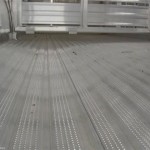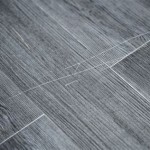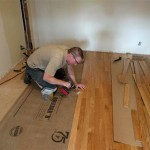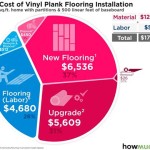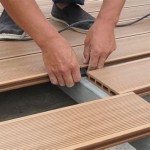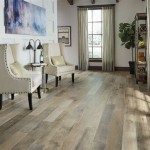Hand-Scraped Laminate Flooring Reviews: A Comprehensive Guide
Hand-scraped laminate flooring offers a distinctive aesthetic appeal, mimicking the look of real hardwood floors that have been painstakingly sculpted by hand. This type of flooring has gained popularity for its ability to add character and a touch of rustic elegance to a variety of interior design styles. This article delves into the nuances of hand-scraped laminate flooring, providing a comprehensive overview based on reviews and focusing on key aspects that potential buyers should consider before making a purchase. The scope includes durability, aesthetics, installation, maintenance, and cost, drawing from various consumer experiences and expert analyses.
Understanding Hand-Scraped Laminate Flooring
Laminate flooring, in general, is a multi-layer synthetic flooring product fused together through a lamination process. It typically consists of a core layer (often made of high-density fiberboard or medium-density fiberboard), a photographic layer that replicates the desired design (in this case, wood with a hand-scraped texture), and a wear layer on top that protects the underlying layers from scratches, dents, and fading. Hand-scraped laminate distinguishes itself by incorporating a textured surface that simulates the uneven, handcrafted appearance of genuine hand-scraped hardwood. This texture is achieved through various manufacturing techniques, including embossing in register (EIR), which aligns the texture with the printed grain pattern, creating a more realistic look and feel.
The visual appeal of hand-scraped laminate lies in its ability to conceal imperfections and add depth to a room. The variations in texture and color tones provide a visual richness that can complement both traditional and contemporary decor styles. However, the quality of the hand-scraped effect can vary significantly across different brands and product lines, influencing the overall aesthetic impact and perceived value.
Key Considerations: Durability and Wear Resistance
One of the primary factors influencing consumer satisfaction with hand-scraped laminate flooring is its durability. The wear layer is the critical determinant of how well the flooring will withstand daily wear and tear, including foot traffic, pet scratches, and accidental spills. The wear layer's thickness is measured in mils, with thicker wear layers offering greater protection against damage. Residential laminate flooring typically ranges from 8 mils to 12 mils, while commercial-grade laminate may have wear layers of 20 mils or more.
Consumer reviews often highlight the importance of choosing a laminate with a sufficiently thick wear layer, particularly in high-traffic areas such as hallways, kitchens, and living rooms. Scratches and dents are common complaints among users who opt for thinner wear layers, especially in households with children or pets. The Abrasion Class (AC) rating is another important indicator of durability. AC ratings range from AC1 to AC5, with AC5 representing the highest level of resistance to abrasion and suitable for heavy commercial use. For residential applications, an AC3 or AC4 rating is generally recommended.
Beyond the wear layer and AC rating, the core layer's density also contributes to the flooring's overall durability. A denser core provides greater resistance to indentation and moisture absorption. High-density fiberboard (HDF) is generally preferred over medium-density fiberboard (MDF) for its superior strength and water resistance. Reviews frequently mention that HDF-core laminates tend to perform better in humid environments and are less prone to swelling or warping.
Aesthetic Appeal and Design Versatility
The aesthetic appeal of hand-scraped laminate flooring is a significant driver of its popularity. The ability to replicate the look of real hardwood at a lower cost is a major advantage. However, the quality of the replication can vary significantly. Factors such as the realism of the wood grain pattern, the depth and variation of the hand-scraped texture, and the color palette all contribute to the overall aesthetic impact.
Reviews often emphasize the importance of examining samples in person before making a purchase. Online images can be misleading, and the texture and color nuances may not be accurately represented. Observing the flooring under different lighting conditions is also crucial to ensure that the chosen color and texture complement the existing decor. The size and shape of the planks can also influence the overall look. Wider planks tend to create a more spacious and luxurious feel, while narrower planks may be better suited for smaller rooms.
The availability of different color options and wood species replications is another factor that influences consumer choice. Common options include oak, hickory, maple, and walnut, each offering a distinct aesthetic character. Lighter colors can brighten a room and create a more airy feel, while darker colors can add warmth and sophistication. The choice of color should be carefully considered in relation to the existing wall color, furniture, and lighting to create a cohesive and visually appealing space.
Installation: Ease and Cost Considerations
The installation process is a critical aspect of any flooring project. Hand-scraped laminate flooring is typically designed for a floating installation, meaning that the planks are connected to each other using a click-lock system, rather than being glued or nailed to the subfloor. This type of installation is generally considered to be easier and faster than traditional hardwood flooring installation, making it a popular choice for DIY enthusiasts.
Reviews frequently mention the importance of preparing the subfloor properly before installation. The subfloor should be level, clean, and dry to ensure a smooth and stable surface for the laminate flooring. Any imperfections in the subfloor can lead to unevenness or squeaking after installation. A moisture barrier is also typically recommended to protect the laminate from moisture migration from the subfloor.
While floating laminate flooring installation is generally considered DIY-friendly, it is still essential to follow the manufacturer's instructions carefully. Proper acclimation of the flooring to the room's temperature and humidity is crucial to prevent expansion or contraction after installation. It is also important to use the correct tools and techniques to avoid damaging the planks during installation. Professional installation is often recommended for larger or more complex projects, particularly if the subfloor requires significant preparation.
The cost of installation can vary depending on the size of the project, the complexity of the installation, and whether professional installation is required. DIY installation can save on labor costs, but it is important to factor in the cost of tools and materials. Professional installation costs typically range from \$2 to \$5 per square foot, depending on the location and the installer's experience.
Maintenance and Cleaning Practices
Maintaining hand-scraped laminate flooring is generally straightforward. Regular sweeping or vacuuming is essential to remove dirt and debris that can scratch the surface. Damp mopping with a mild detergent specifically designed for laminate flooring is also recommended for periodic cleaning. It is important to avoid using excessive water, as this can seep into the seams and damage the core layer.
Reviews often highlight the importance of using felt pads under furniture legs to prevent scratches and dents. Area rugs can also provide additional protection in high-traffic areas. Spills should be cleaned up immediately to prevent staining or water damage. Abrasive cleaners and harsh chemicals should be avoided, as they can damage the wear layer and dull the finish.
While hand-scraped laminate flooring is generally resistant to scratches and stains, it is not impervious to damage. Deep scratches or gouges may require repair or replacement of the affected planks. Some manufacturers offer repair kits that can be used to fill in minor scratches or chips. However, for more significant damage, professional repair or replacement may be necessary.
Cost-Effectiveness and Value Proposition
One of the main advantages of hand-scraped laminate flooring is its cost-effectiveness compared to real hardwood. Laminate flooring typically costs significantly less than hardwood, both in terms of the material cost and the installation cost. This makes it a more accessible option for homeowners who want the look of hardwood without the high price tag.
Reviews often highlight the value proposition of hand-scraped laminate flooring. While it may not have the same inherent value or longevity as real hardwood, it offers a comparable aesthetic appeal at a fraction of the cost. The durability and ease of maintenance also contribute to its overall value. For homeowners on a budget, hand-scraped laminate flooring can be a practical and attractive flooring option.
However, it is important to consider the long-term cost of ownership when evaluating the value proposition. Laminate flooring typically has a shorter lifespan than hardwood, and it may need to be replaced sooner. The cost of replacement should be factored into the overall cost analysis. It is also important to consider the potential resale value of the home. While laminate flooring can enhance the aesthetic appeal of a home, it may not have the same impact on resale value as real hardwood.

Disadvantages Of Laminate Wood Flooring Key Drawbacks

Engineered Flooring Vs Laminate Everything You Need To Know Forbes Home

Unbiased Luxury Vinyl Plank Flooring Review Cutesy Crafts

Trafficmaster Laminate Flooring Reviews Is It Worth Floorings

Laminate Flooring Types And S Forbes Home

Unbiased Luxury Vinyl Plank Flooring Review Cutesy Crafts

Vinyl Vs Laminate Flooring Pros Cons And Differences Forbes Home

Laminate Vs Vinyl Flooring Which Is The Best Option

What Is The Best Underlay For Laminate Wood Flooring Luxury

Tools Supplies And Materials For Installing Laminate Or Vinyl Plank So That S How You Do
Related Posts

